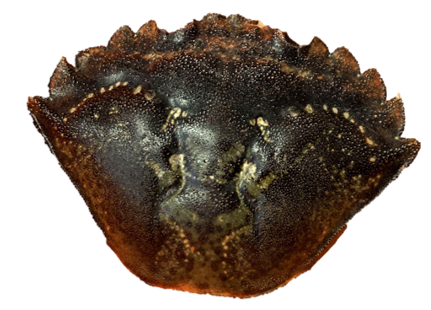As Alaskans, we all love our coastline. It’s where treasures are found, foods are gathered, and nature unfolds. With over 33,000 miles of coastline, there’s an activity for everyone: beachcombing, foraging, clamming, shrimping, fishing, birding, hunting, kayaking, and countless other recreational, traditional, and commercial activities. Central to all these cherished activities is a healthy coast and ocean.
Stewards of our coastline include community members, federal and state agencies, tribal organizations, and many others. They are always keeping an eye out for threats on the horizon, like preventative care doctors ensuring overall patient health. Doctors are proactive in their approach to find health problems before they become devastating, often before symptoms arise. When maladies present themselves, they are prepared to write prescriptions and assign treatment options. Over the last couple decades, stewards of Alaska’s coastlines have had their eyes on the threat of invasive European green crab creeping northwards from Washington and British Columbia. Consequently, they knew a new prescription was needed to prevent potentially devastating symptoms from this new-to-Alaska invasive species.
A creeping coastline malady
Invasive green crabs were first detected in Alaska by Metlakatla Indian Community Department of Fish and Wildlife in July 2022. Ultimately their arrival to Alaska has the potential to wreak havoc on the coastal resources that fish, wildlife, and Alaskans depend on. They are aggressive hunters, outcompeting and consuming native crab species, such as juvenile Dungeness, and dig up important eelgrass habitats, vital for juvenile fish and migrating waterbirds. It’s no wonder they are in the top 20 on the Invasive Species Specialist Group’s list of World’s Worst Invasive Alien Species!
A new prescription
To address the threat of invasive green crabs, partners from across the state worked together to write a prescription and treatment strategy, in this case a Rapid Response Plan. A group of partners from the Alaska Invasive Species Partnership had an existing Rapid Response Plan, created in 2009, for invasive green crabs. Much like evolving medical science, new advancements to the plan would better address the issue of the crabs in our current environment. The process of revising the plan began in 2020 with a target deadline of completion by 2023. The urgency of the revised plan was highlighted in 2022 when the invasive green crabs were found for the first time in Alaska.
Taking all the current research and invasion information into account, partners from multiple entities drafted a revised Rapid Response Plan. Like a prescription medication trial, they tested out the plan. In this case over a three-day workshop in Homer, Alaska.
Participants addressed the hard on the ground questions. What would a response look like if crabs were detected in Homer tomorrow?How would a response be different in Ketchikan? Who would participate? What resources are available? What groups are missing from the response? What are the best early detection methods? What can we learn from response in Washington?
By the end of the workshop, participants evaluated the logistics of a response at different locations across the state, determined roles and responsibilities of partners, and simulated on the ground early detection scenarios. Plus, everyone got their hands wet and sandy by participating in early detection surveys, checking traps, and conducting molt walks.
Evaluating the plan before a full-scale response was greatly needed. This proactive opportunity allowed partners to identify areas that needed strengthening and make small tweaks to the plan, ensuring when the time comes for a response all aspects of the plan will work in concert.
While the crabs have arrived in Alaska, partners are better prepared to keep Alaskan coastlines healthy.
_________________________________________________________________________
The prescription includes everyone!
How you can help:
- Learn to identify:
Despite the common name, invasive green crabs aren’t always green. The tell-tale sign for identifying an invasive green crab is the five spines behind each eye. Test your identification skills on photos of real crabs.
- Report any invasive green crab sighting:
If you’re on Annette Islands Reserve, call (907) 886-FISH. If you’re anywhere else in Alaska, report it to Alaska Department of Fish and Game’s online Alaska Invasive Species Reporter or the Invasive Species Hotline at 1-877-INVASIV. - Get your hands wet and dirty:
You can volunteer to be a citizen scientist by joining the marine invasive species citizen monitoring network. Contact ADF&G Invasive Species Program coordinator at 1–877-INVASIV to get involved! - Look for carapaces while beachcombing:
The carapace, the hard upper shell of a crab, is shed during molting. Looking for carapaces is a great way to detect the presence of invasive green crab, as well as other native species. Not only is it a fun treasure hunt, but you are helping to track and detect invasive species! Take the short worksheet along with you on your next walk.








